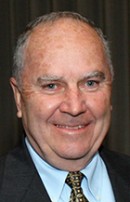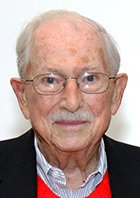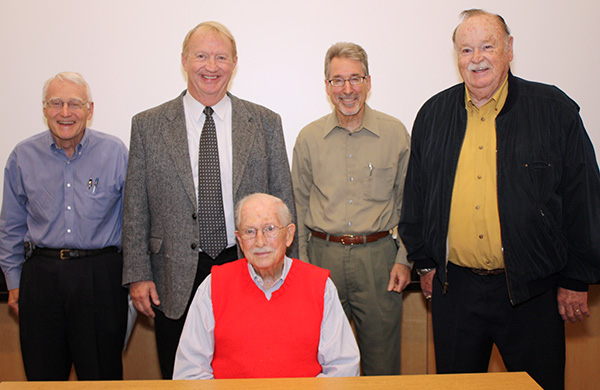 Dr. Gerald Harrington (Endo ’69), is Professor Emeritus and former Chair of our Department of Endodontics (1993-2001). In 2014 he was selected as our School’s Distinguished Alumnus. Here, he recalls the collaborative effort that went into Dr. John Ingle’s landmark textbook on endodontics, which was published 50 years ago.
Dr. Gerald Harrington (Endo ’69), is Professor Emeritus and former Chair of our Department of Endodontics (1993-2001). In 2014 he was selected as our School’s Distinguished Alumnus. Here, he recalls the collaborative effort that went into Dr. John Ingle’s landmark textbook on endodontics, which was published 50 years ago.
In 1965, Dr. John Ingle published the first edition of his textbook. It covered all aspects of the basic sciences, diagnoses, and clinical management related to root canal problems. While there were other endodontics textbooks at the time, Dr. Ingle’s was by far the most comprehensive, comprising 656 pages. In contrast to other textbooks, Ingle’s was highly illustrated, with over 1,000 illustrations. Despite its complexity, his textbook’s title was simply Endodontics.
Dr. Ingle was Chairman of the University of Washington Department of Periodontics and Endodontics when he wrote and edited his textbook. A number of UW faculty and graduates of the Graduate Endodontics Program were authors or co-authors of chapters of the textbook. The faculty were Drs. Alf Ogilvie, Pierre Dow, and Bernie Zeldow of the Department of Periodontics and Endodontics and Lloyd Jacobson, Chairman of Oral Diagnoses and Treatment Planning. The former graduate students were Drs. Ed Beveridge, Bill Clem, Marshall Goldberg, Ray Leubke and Gene Natkin.

Dr. Beveridge became Chairman of the Department of Endodontics at the University of Southern California. Dr. Clem taught at Washington, Northwestern and Illinois, and became Director of the Graduate Endodontics Program at the University of Maryland. Dr. Leubke was Chairman of the Department of Endodontics at the University of Kentucky and then at Louisiana State. Gene Natkin was the first Chairman of the UW Department of Endodontics. Dr. Ogilvie’s chapter was subsequently published as a stand-alone textbook titled An Atlas of Pulpal and Periapical Biology.
Improving on other textbooks: The extensive use of illustrations represented a marked departure from previous textbooks in the field. These included artistic drawings, photographs, and X-ray reproductions. The illustrations drawn by Virginia Brooks from UW Health Sciences Illustration and the photographic and X-ray reproductions by Cliff Freehe, Director of Dental Photography, were exceptional contributions to the educational value of Dr. Ingle’s textbook and set the tone for future textbooks in the field.
The publication of Dr. Ingle’s textbook coincided with the recognition of endodontics as a dental specialty in 1964. At the time of publication, there were five endodontists practicing in downtown Seattle: Drs. Chet Burrell, Tom Simpson, Pierre Dow, Bernie Zeldow and Gene Natkin. They were the only endodontists between Minneapolis and San Francisco.
The influence that Dr. Ingle’s first edition had on the early development of endodontics as a specialty cannot be overstated. Many came to refer to it as “the bible of endodontics.” It also brought significant recognition to our School and department.

“Pull or be damned:” Dr. Ingle did much of his writing for the textbook on the Washington coast near Deception Pass, at the north end of Whidbey Island. In his preface, he used a nearby road, named “Pull or Be Damned Road,” as a metaphor for the state of dentistry at that time. In his sixth edition in 2008, he republished his “pull or be damned” preface, and in his 2008 preface he reflected back on the “pull or be damned” period:
“Forty years ago it was more prevalent to extract teeth than to save them by root canal therapy. A plea was made in this preface (1965) to trust endodontic treatment and to reverse the trend toward “oral amputation,” he wrote. “Gradually this became a fact, as endodontics spurred ahead and full dentures declined. … We’ve come a long way since those days, a time of wholesale extractions.”